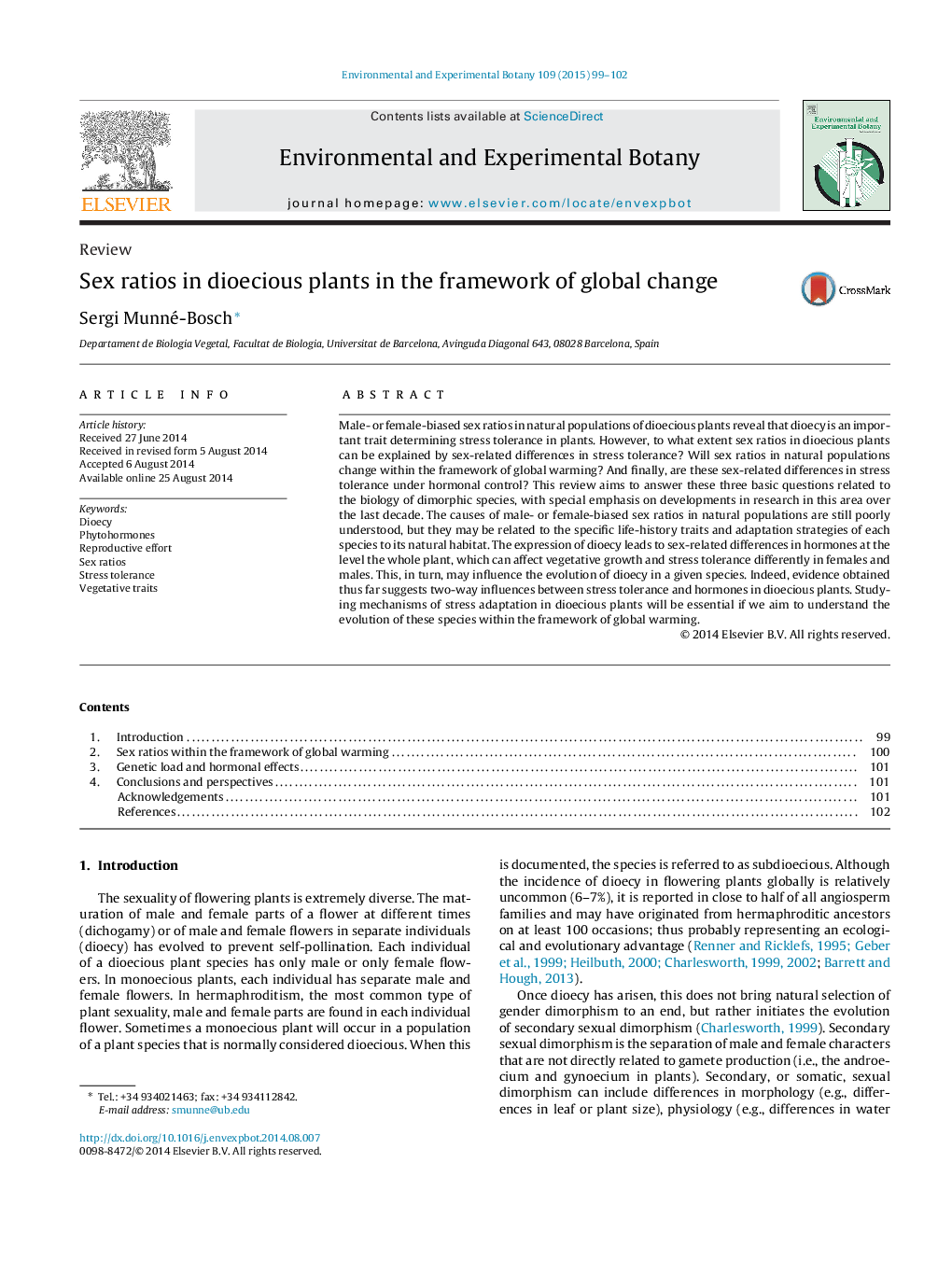| کد مقاله | کد نشریه | سال انتشار | مقاله انگلیسی | نسخه تمام متن |
|---|---|---|---|---|
| 4554322 | 1628068 | 2015 | 4 صفحه PDF | دانلود رایگان |
• Male-biased sex ratios predominate in natural populations of dioecious plants.
• Male and female plants differ in their resistance to environmental stresses.
• Sex ratios in natural populations may be altered in the framework of global change.
Male- or female-biased sex ratios in natural populations of dioecious plants reveal that dioecy is an important trait determining stress tolerance in plants. However, to what extent sex ratios in dioecious plants can be explained by sex-related differences in stress tolerance? Will sex ratios in natural populations change within the framework of global warming? And finally, are these sex-related differences in stress tolerance under hormonal control? This review aims to answer these three basic questions related to the biology of dimorphic species, with special emphasis on developments in research in this area over the last decade. The causes of male- or female-biased sex ratios in natural populations are still poorly understood, but they may be related to the specific life-history traits and adaptation strategies of each species to its natural habitat. The expression of dioecy leads to sex-related differences in hormones at the level the whole plant, which can affect vegetative growth and stress tolerance differently in females and males. This, in turn, may influence the evolution of dioecy in a given species. Indeed, evidence obtained thus far suggests two-way influences between stress tolerance and hormones in dioecious plants. Studying mechanisms of stress adaptation in dioecious plants will be essential if we aim to understand the evolution of these species within the framework of global warming.
Journal: Environmental and Experimental Botany - Volume 109, January 2015, Pages 99–102
